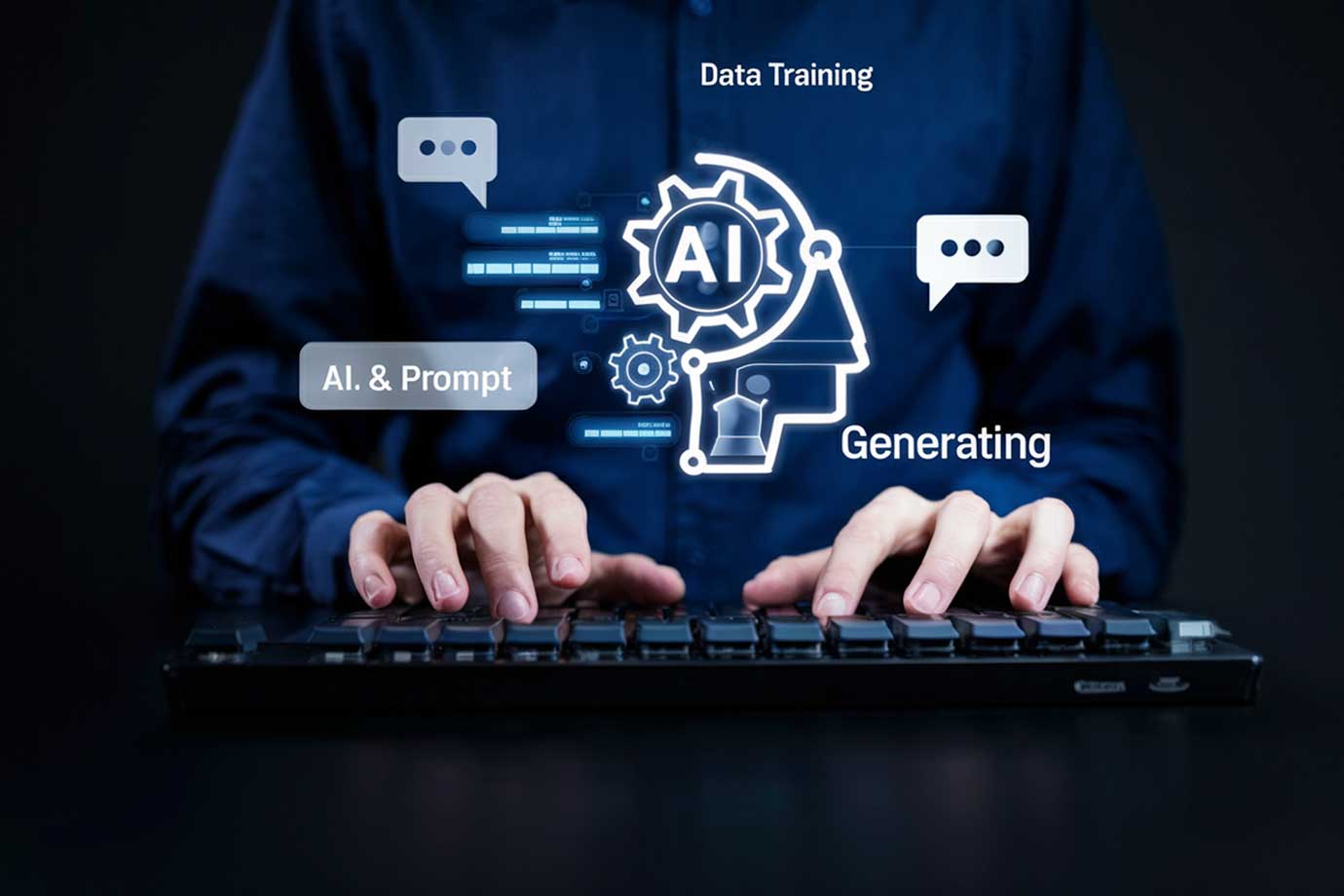Top Azure AI Innovations in 2025: Transforming Business Through Microsoft’s AI Tools

08 Aug 2025
By 2025, the Azure AI suite provided by Microsoft will be at the center of the mainstream enterprise change. The Azure AI is no longer confined to research laboratories or a niche tech startup, and the tech takes part in the process of how enterprises integrate and streamline operations, mitigate risk, and innovate faster.
The current Azure AI innovations represent a paradigm shift because individual tools have turned into coherent ecosystems that automate, manage, and optimize all layers of a business. Be it an autonomous workflow construction or a bulletproof data compliance, the Azure AI has given organizations the confidence to deploy AI on a scale and securely.
We discuss in the following the leading technologies that will redefine the performance of businesses in the year 2025, leveraging the powerful AI tools by Microsoft.
1. Generative AI Workflows: Moving Beyond Chatbots
It is no longer the age when generative AI could only be limited to chatbots and virtual assistants. By 2025, generative intelligence will have been infused into every nook and cranny of the enterprise, through the likes of Azure OpenAI and Microsoft Copilot. These tools have since been able to support:
Individualized document generation, such as sales emails and investment proposals, about industry tone and intent of the audience.
Contract analysis, in which AI can find risky clauses, summarize complex legal text, and raise compliance troubles.
Marketing asset creation, enabling brand-collaborating to create SEO blog posts, ad copy, and social content automatically to the brand voice.
With OpenAI models now directly embedded in such applications as Microsoft 365, Dynamics, and Power Platform, companies will no longer be experimenting with generative AI but rather will be building mission-critical workflows on it.
2. AI-Powered Data Governance with Azure Purview & Microsoft Fabric
By 2025, organizations will not merely require data, but they will require reputable, compliant, searchable data. That is where Azure purview and Microsoft fabric excel.
Azure Purview has now automated its data discovery and classification on multi-cloud environments. It crawls both structured and unstructured data, identifying intelligent labels (e.g., PII, Financial) and generating lineage visualizations that allow tracing back of data flow.
Microsoft Fabric unites data engineering, governance, and analytics on a converged tier, with code now having governance policies continuously applied across the Lakehouse and dashboard.
This AI + governance combination assists companies in implementing privacy, eliminating audit burnout, and allowing analysts to perform confidently using curated data.
3. Autonomous Operations: From Forecasting to Self-Correction
Businesses have been able to create autonomous operations previously defined to be futuristic to some degree with the integration of Azure Machine Learning and IoT Hub.
Action Use Cases:
Predictive Maintenance: IoT sensors push the data to Azure ML models to predict when the equipment may fail way in advance.
Self-Healing Systems: Self-healing powered by Azure monitoring and Artificial Intelligence (AI) agents that monitor performance, redistribute resources, and fix problems automatically.
Optimized Supply Chains: algorithms continuously adjust logic designs due to delays, surges in demand, or movement of inventory.
Due to this automation, there is less downtime and the SLAs are better followed, and the overall operations costs are slashed significantly.
4. Industry-Specific Azure AI Models
Microsoft has published industry-specific and regulatory-compliant models that are also trained on industry-specific data.
Key Sectors:
Finance: Real-time fraud detection, risk analytics, KYC automation.
Healthcare: HIPAA-Compliant Diagnostic Support, Patient Triage, and Treatment Planning.
Retail: Dynamic prices, favorable suggestions coded in engines, personalized product suggestions.
Manufacturing: Defect inspection using vision-based detection, energy consumption, and tracking, as well as asset tracking.
Such vertical models lessen the development effort and enhance the accuracy, and this makes it worth the regulated industries to consider the usage of AI with ease.
5. Secure AI: Native Compliance with Azure Purview & Microsoft Defender
Security by design is not a choice in 2025 when cybersecurity risks will explode. Azure includes protection in all AI workflows:
The Microsoft Defender for Cloud scans the endpoints, APIs, and models using AI vulnerability.
Azure Purview reasons how data is utilized in AI tasks and automatically imposes handling policies.
Zero Trust identity enforcement controls the entry to AI models for the user role and data classification.
This is not only a way to ensure adherence to GDPR, CCPA, and HIPAA regulations- this method develops trust in the customers due to the explainability, auditability, and controllability of the AI usage.
6. Azure OpenAI + Copilot = Augmented Productivity
Azure OpenAI Service and Microsoft Copilot set a new definition of the digital workplace. They no longer have to search, format, or script manually, but can just say in a natural language what they want to be done and have AI perform all the heavy lifting.
Examples:
Finance Teams: In Excel, use Copilot and ask, “Predict my cash flow next quarter based on what it has grown historically and my current burn rate.”
HR Managers: With Copilot in Word, they can create job descriptions on the need of team and compliance templates.
Developers: It may use GitHub Copilot to refactor code, and even create unit tests or describe logic in plain language.
The result? Reduced busywork. Faster iteration. Better decisions. And without removing people from the driving seat.
7. Cognitive Services for Real-Time Intelligence
The Azure Cognitive Services have grown to be plug-and-play smart units for any application. In 2025, they enable a business to:
Interpret customer requests on the fly in more than 100 languages.
Test voice imprints of those to be onboarded or doing transactions.
Identify products, labels, or violations in live video streams of retail, manufacturing, and logistics.
These APIs have their way into kiosks, mobile applications, IVRs, and web platforms, that deliver intelligence at every customer point of contact.
8. Democratizing Custom AI with Azure Machine Learning
Not all organizations could afford a group of PhDs. That is why the low-code platform of Azure Machine Learning is a game changer:
AutoML Pipelines: Users need only post a dataset, leave the modeling to Azure.
Drag-and-Drop UI: The behavior of training, testing, and deployment can be designed graphically.
Model Monitoring: Keep track of drift, bias, and accuracy as time goes on.
Enterprise departments, start-ups, and SMBs can now develop customized AI solutions, at their discretion, within their perimeters of data.
9. IoT + AI: Connected Intelligence at the Edge
By combining Azure IoT and Machine Learning, industries are unlocking real-time insights at the edge:
Republicans in 2025:
Smart Cities: Use congestion prediction models to perfect traffic light operation.
Agriculture: botanize-pictures of crop clusters, pictures of crop images, automate harvesting, crop water and fertilizer settlement, based on satellite and sensor data,
Warehousing: Leverage AI to Handle Robots, Pick-Paths, and Load Balancing on the Fly.
Utilities: Predict electrical consumption and predict outages ahead of time using time collection forecasting.
Instant decisions are made using Azure’s edge capabilities, with no round-trip to the cloud.
10. End-to-End AI Automation: Azure’s Unique Advantage
The distinguishing factor between Azure in 2025 and others is that it is end-to-end in the provision of its services. Suppose that the following is the flow:
A client sends a document (trading note, contract, and so on)
Cognitive Services draw out and categorize content.
Azure ML executes a check of policy compliance/approval.
Microsoft Fabric records the activity and dashboards.
Power Automate + Copilot either directs the task to the next point or creates an overview email.
This interdependent AI loop cuts processing time by 70%, cutting human error and making all steps transparent, compliant, and secure.
The Business Outcomes: From Efficiency to Competitive Advantage
AZURE AI is no longer a time-saving thing, but it redefines strategy. The businesses that use such tools can observe:
Accelerated innovativeness by automation of the monotonous tasks.
Enhanced compliance through embedded review and record keeping.
Making clients more loyal through real-time, customized service.
Cutting overheads through a phase-out of manual to smart systems.
Whether it is the factory floor or the C-suite dashboards, Azure AI can be the cord that stitches together digital transformation.
Final Thoughts: Why Azure AI Is Leading in 2025
Not only is Microsoft Azure not merely following in the footsteps of AI, but it is also leading the pack. It helps organizations:
Smart automates
Govern well
Scale at ease
Become more innovative
No matter where your AI maturity is today or where you aim to scale enterprise-wide automation, Azure AI in 2025 provides the skills, confidence, and insight to go the distance to bring vision to life. Feel like future-proofing your operations using Azure AI?
Go ahead and take your first use case into consideration - be it document automation, smart security, or integration of IoT.
Don't lose the lead. Stay secure. Build intelligently with Microsoft Azure AI.




.jpeg)
